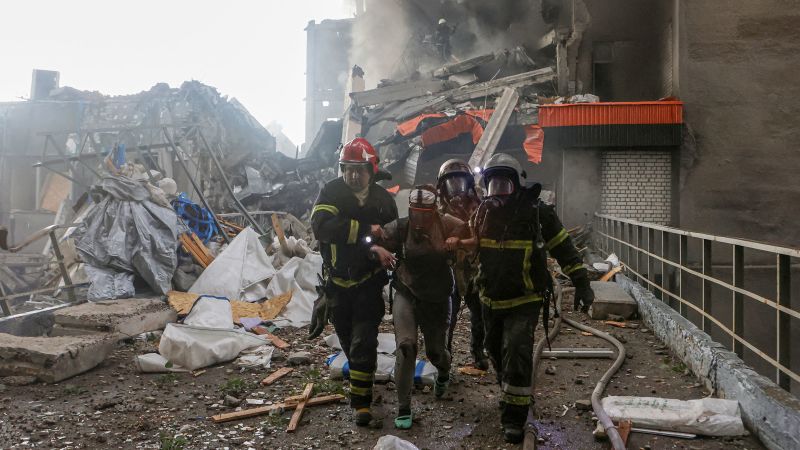Russia launched its largest drone attack yet on Ukraine’s second-largest city, Kharkiv, in the early hours of Saturday, June 7, 2025, causing significant casualties and widespread destruction. The assault involved a massive barrage of 48 drones, two missiles, and four precision-guided aerial glide bombs, marking the most intense and devastating strike on Kharkiv since the beginning of Russia’s full-scale invasion of Ukraine in February 2022.
Kharkiv, situated approximately 20 to 30 kilometers (12 to 19 miles) from the Russian border, has been a frequent target throughout the conflict due to its strategic location and symbolic importance. This latest attack was described by Kharkiv’s mayor, Ihor Terekhov, as “the most powerful attack” the city has endured during the war. Residents reported hearing around 40 explosions over a short period, as the Russian forces struck simultaneously with missiles, drones, and guided bombs, creating an atmosphere of terror among the civilian population.
The human toll from the assault was severe. At least three people were killed, including victims in multi-story residential buildings that caught fire and were heavily damaged. Emergency services released footage showing flames engulfing several floors of a residential building in the Oovyansi district, where two fatalities occurred. Another victim died in a separate strike on a residence in the Kyskyi district. In addition to the fatalities, at least 17 to 22 people were injured, including two children—a one-and-a-half-month-old baby and a 14-year-old girl—highlighting the indiscriminate nature of the attack.
The physical damage was extensive, with reports indicating that 18 apartment buildings and 13 private homes were hit. The strikes also affected educational institutions and infrastructure, compounding the hardship faced by Kharkiv’s residents. Images from the scene showed charred and partially destroyed buildings, vehicles, and debris-strewn streets, as rescue teams worked to assist the injured and clear rubble. There were concerns that some people might still be trapped under debris following the strikes.
This massive drone and missile offensive by Russia came in the wake of a bold Ukrainian drone operation, dubbed “Operation Spider Web,” which severely damaged over a third of Moscow’s key cruise missile carriers stationed at air bases deep inside Russian territory. Ukraine reportedly used 117 drones in that operation, which involved smuggling drones into Russia hidden in trucks and launching them remotely near Russian airfields. This Ukrainian success appears to have provoked Moscow’s retaliatory wave of attacks across multiple Ukrainian regions, including Kharkiv, Donetsk, Dnipropetrovsk, Odesa, and Ternopil.
The scale of the Russian counterattack was unprecedented in recent weeks. Ukrainian air defenses intercepted 87 drones and seven missiles during the night, while another 80 drones were either electronically redirected or were decoys. Despite these defensive efforts, Russian forces managed to strike ten different locations, underscoring the intensity and coordination of the assault. The Russian military also deployed 206 drones, 2 ballistic missiles, and 7 additional missiles across Ukraine during the night, indicating a broad and sustained aerial campaign.
The attack on Kharkiv not only inflicted human suffering and infrastructure damage but also further escalated tensions in the ongoing conflict. It dampened hopes for a cease-fire or peace negotiations, as both sides continue to engage in increasingly destructive military operations. Kharkiv’s governor, Oleh Syniehubov, noted that Russian forces north of the city advanced into Ukraine’s Sumy region, capturing villages and attempting to establish buffer zones along the border.
Internationally, the strikes have drawn condemnation and calls for increased support to Ukraine. Ukrainian Foreign Minister Andrii Sybiha emphasized the need for greater pressure on Moscow to end the violence and for enhanced assistance to strengthen Ukraine’s defense capabilities.
In conclusion, the largest drone attack on Kharkiv to date represents a significant escalation in the Russia-Ukraine war. It caused at least three deaths, injured dozens, and inflicted widespread destruction on residential and civilian infrastructure. The offensive was a direct response to Ukraine’s successful drone strikes on Russian military assets, highlighting the ongoing tit-for-tat nature of the conflict and the devastating impact on civilians caught in the crossfire.

